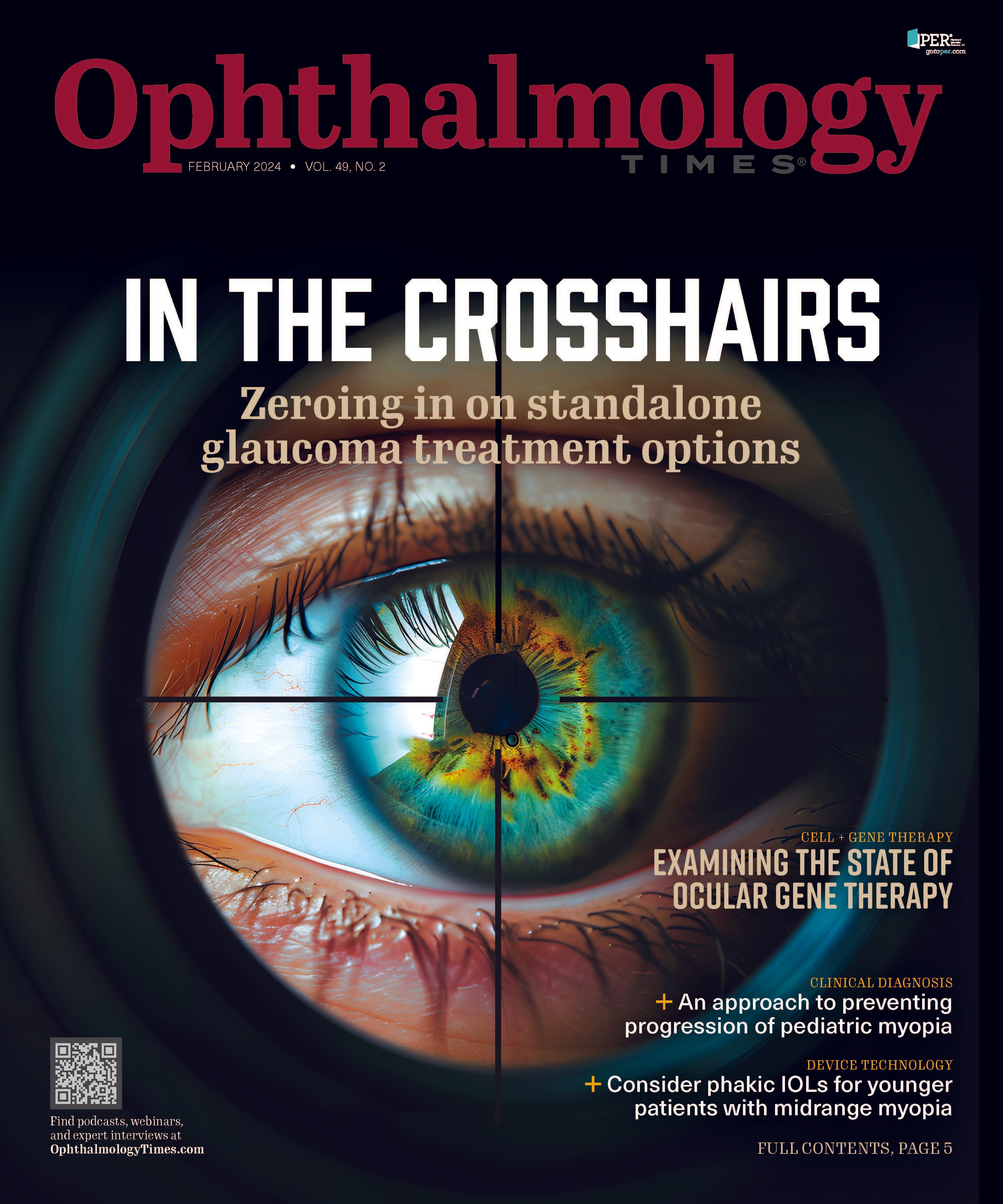News
Article
Digital Edition
An approach to preventing progression of pediatric myopia
Author(s):
The first step in management is increasing the time spent outside
(Image Credit: AdobeStock/Anastassiya)

Pediatric ophthalmologist Noha Ekdawi, MD, FAAP, shares 2 cases of myopia management in children and highlights her treatment approach to prevent myopia progression from a recent Ophthalmology Times case-based roundtable discussion. She is with the Wheaton Eye Clinic in Wheaton, lllinois.
Case 1
The patient is a healthy girl, aged 8 years, with a strong family history of myopia. The mother and father, respectively, have –8.0 and –11 diopters (D) of myopia. Her maternal grandfather had a retinal detachment.
In 2017, the patient had –1.25 D of myopia. Ekdawi prescribed 0.01% atropine, and a year later the patient had progressed significantly to –2.25 D. After the atropine dose was increased to 0.025%, by May 2020, the vision was stable. By May 2021, there was a small progression with the same dose.
In September 2021, Ekdawi began recommending MiSight contacts (CooperVision), child-friendly, daily disposable lenses that slow myopia progression in children aged 8 to 12 years. However, with referral for the contacts, the patient received a multifocal contact lens. By May 2023, she stopped atropine and the myopia progressed to –4 D bilaterally, a 3-D increase in 5 years. The axial lengths (AL) were 25.77 mm and 25.62 mm Ekdawi said patient observation would determine the visual status.
Case 2
A boy, aged 7 years, with a history of Kawasaki disease (mucocutaneous lymph node syndrome) presented in October 2020. He wore myopic glasses, but the prescription had increased during the previous year. By 2020, Ekdawi began starting all patients with atropine 0.025%.
In October 2021, the myopia increased from –1.5 D in the right eye to –2.5 D and in the left eye from –2 to –2.5 D. After 18 months of atropine treatment, the myopia increased 1 D in the left eye and 0.75 D in the right eye. In June 2022, he was referred for fitting of MiSight contact lenses; 6 months later, there was no visual change. After a year with combined treatment of MiSight lenses and 3 years on atropine, the vision did not change; the ALs were 24.82 mm and 25.01 mm.
“In both cases, time will tell [whether] the combined treatment continues to work, and, if not, the atropine prescription should be increased,” Ekdawi said. “[Although] there [are] not a lot of good data from multifocal contacts, MiSight contacts performed well in case 2.”
Outside time, atropine, MiSight contacts are key management components
Ekdawi’s first step in myopia management is increasing the time spent outside. “The key to myopia management is the environment,” she stated. When outside, individuals tend to gaze more into the distance. Inside, the 20-20-20 rule can be used.
Currently, screen time has increased drastically beginning in kindergarten. This should be pointed out to parents, who can make commonsense adjustments to computer time at home. “I discuss outside time as a very good way of stopping progression and perhaps stopping myopia onset,” she noted.
Regarding myopia management itself, when young children present with myopia, she discusses low-dose atropine 0.025% in children as young as 3 years. With that dose, children tend to not have adverse effects. in contrast to the 0.05% dose. She reported having increased the dose to 0.1% in a patient with high progression. Ekdawi emphasized that each patient is treated individually with consideration of the age, AL, family history, and parental attitude.
Her third step is discussing MiSight contact lens starting at age 7 years. For children who are not yet candidates, she advises parents that instilling an eye drop at night is easier than placing a MiSight contact. “When a child is ready for MiSight contacts, I use all 3 steps together, which hopefully stops myopia progression,” she said.
More about MiSight lenses
Ekdawi reported relatively positive outcomes with MiSight lenses. Some patients have been switched to multifocals by the clinician who fit the lenses, perhaps because of intolerance or cost. Many patients have 20/25 vision without the reading vision being affected.
A drawback of the lenses is how much or how little the patients wear them (ie, some patients do not wear them every day or for long enough every day). She does not force them to wear the lenses all day because of the risk of irritation or keratitis, especially if the myopia is not progressing and use of low-dose atropine and increased outside time are adhered to.
Parental acceptance of the MiSight lenses can vary based on cost. Some parents do whatever is possible to stop progression, while others prefer trying one thing at a time to determine the effect on the myopic progression.
Regarding myopia and myopia control, Ekdawi believes that combination therapy is where treatment is headed, which may prevent future issues such as glaucoma, cataract, retinal tears/detachment, and macular pathologies.
She concluded, “As a pediatric ophthalmologist, I’ve seen one too many kids with retinal detachments with high minus, and they go from retinal tears to flap retinal detachment, overlying the macula in a 9-year-old. This is why I try to treat myopia so aggressively.”

Newsletter
Don’t miss out—get Ophthalmology Times updates on the latest clinical advancements and expert interviews, straight to your inbox.





